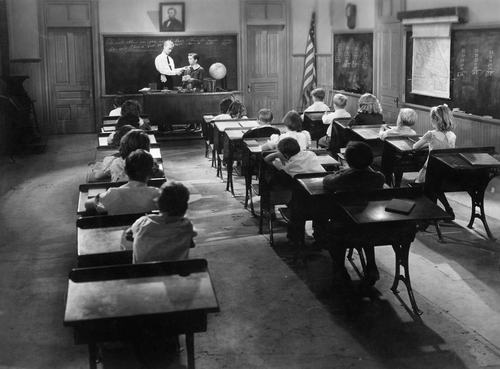It’s been said for years: We can’t help our students become citizens in an evolving and global workplace if we’re teaching them in last century’s classrooms. And now, teachers are clamoring for modern learning spaces instead of rows of desks facing the front of the classroom, according to new research.
More than 1,600 teachers participated in a survey on learning spaces, conducted as part of research firm MDR’s State of the K-12 Market 2018 series, and the majority of those teachers believe classrooms and learning spaces impact student outcomes.
“Teachers across the country overwhelmingly agree that creative learning spaces play an important role in student engagement,” says Melissa Pelletier, MDR education research editor and an author of the study. “Companies who work with schools will gain valuable insights into what teachers believe creates learning environments that encourage all students to collaborate, develop critical thinking skills, and achieve their highest potential.”
Ninety-four percent of teachers say space impacts learning, and within that group:
- 42 percent believe a positive environment is conducive to learning and better performance, with one surveyed teacher saying, “It is extremely important that the learning environment be spacious, warm, and inviting. It should encourage exploration and experimentation, as well as reflective and in-depth thinking.”
- Nearly 75 percent believe classroom environments are conducive to 21st-century learning, such as collaboration and digital literacy
- More than 25 percent say small spaces and negative environments often create distractions and deter learning
Technology plays a crucial role in learning spaces–60 percent of teachers say it is extremely important, and 27 percent believe it is somewhat important.
It is especially important to consider technology needs when designing learning spaces–students need enough power sources and need the ability to move around easily to view other students’ screens or work in groups with devices.
Forty-one percent of teachers in a school that just completed construction say accommodating new technologies was a consideration, and 74 percent of teachers in schools that need construction say technology is the highest consideration.
Surveyed educators say their ideal classroom would be larger (31 percent) and would feature more open, flexible, and collaborative spaces (24 percent). In addition:
- 69 percent of teachers would like the ability to accommodate different learning styles
- 55 percent would like classrooms with a design that encourages movement and decreases sedentary behavior
- 45 percent would improve or update spaces, such as improving bathrooms, cabinets, repainting areas, and updating carpet
- 21 percent would include added or updated technology or space for technology
- 9 percent would add a makerspace, a science lab, or an area for fine arts or sensory exploration
When schools complete construction or renovation projects, common modifications include adding chalkboard or whiteboard walls (28 percent), adding collaborative work spaces (27 percent), and adding flexible furniture (23 percent).
Teachers in schools that need a renovation say the addition of collaborative work spaces (63 percent), flexible furniture (63 percent), and adding spaces for personalized learning (55 percent) are their top desired classroom improvements.
- Friday 5: Universal Design for Learning - April 19, 2024
- Educators love their edtech, but want more training - April 18, 2024
- Friday 5: College and career readiness - April 12, 2024


